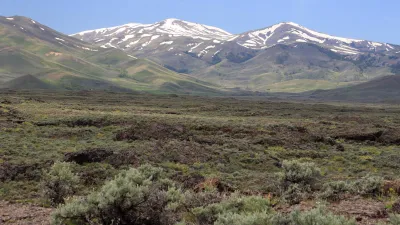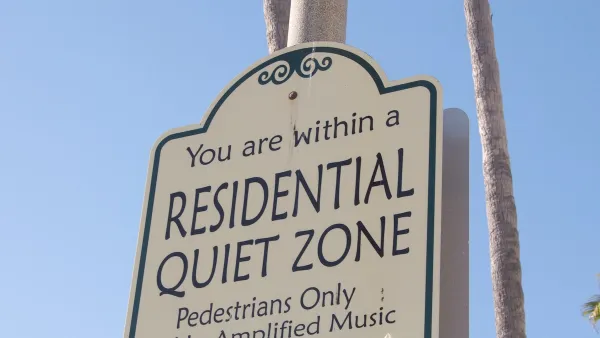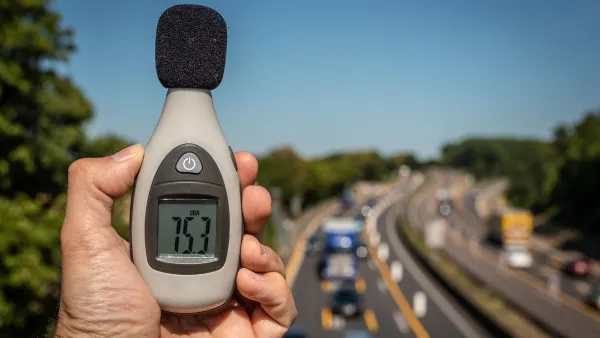Humans can't always hear the sound, but there is plenty of noise in what we think of quiet corners of the United States.

Researchers catalogue sounds of several varieties that exist beyond the perception of human hearing. This kind of research is intended to contribute to later discoveries about the noise in the world, but it also reveals plenty of surprises.
As an explainer post by Maggie Koerth-Baker describes, there's a lot to noise that humans don't perceive. "And when you start listening for the sounds we can’t hear, the loudest place in America can end up being right under your feet."
Scientists have tools that can detect these “silent” waves, and they’ve found a lot of noise happening all over the U.S. Those noises are made by the cracking of rocks deep in the Earth along natural fault lines and the splashing of whitecaps on the ocean. But they’re also made by our factories, power plants, mines and military.
To illustrate this point, Koerth-Baker cites the work of Omar Marcillo, staff scientist at Los Alamos National Laboratory, who "is trying to map these sources of small seismic signals in order to help other scientists track very small earthquakes that could help predict big, dangerous natural disasters."
To do that, Marcillo and his team used data collected over a decade by the U.S. National Seismic Network — 100 stations that track the movement of the ground all over the country. They combined that data with information about nearby industries to start figuring out which noises were likely human-made.
The result of that research is a map of seismic noise that reveals the noisiest places in the country to be located in the Great Plains of the Midwest.
But seismic sound isn't the only variety of noise we humans don't hear. There's also infrasound:
Infrasound travels through the air, just like the stuff we can hear does, but in this case, the molecular jiggles and vibrations are happening too slowly for our eardrums to convert them into information our brains understand. Infrasound can travel long distances and is often the unheard ripples set off by an audible sound that happened far, far away.
Scripps Institution of Oceanography researchers Catherine De Groot-Hedlin and Michael Hedlin are the researchers cited in this example.
"In their data, it’s Western states like Nevada, Utah and Idaho that turn up loudest, probably the result of nearby military facilities."
The article also a map of the loudest places for infrasound.
FULL STORY: The Loudest Places You Can’t Hear

National Parks Layoffs Will Cause Communities to Lose Billions
Thousands of essential park workers were laid off this week, just before the busy spring break season.

Retro-silient?: America’s First “Eco-burb,” The Woodlands Turns 50
A master-planned community north of Houston offers lessons on green infrastructure and resilient design, but falls short of its founder’s lofty affordability and walkability goals.

Delivering for America Plan Will Downgrade Mail Service in at Least 49.5 Percent of Zip Codes
Republican and Democrat lawmakers criticize the plan for its disproportionate negative impact on rural communities.

Test News Post 1
This is a summary

Test News Headline 46
Test for the image on the front page.

Balancing Bombs and Butterflies: How the National Guard Protects a Rare Species
The National Guard at Fort Indiantown Gap uses GIS technology and land management strategies to balance military training with conservation efforts, ensuring the survival of the rare eastern regal fritillary butterfly.
Urban Design for Planners 1: Software Tools
This six-course series explores essential urban design concepts using open source software and equips planners with the tools they need to participate fully in the urban design process.
Planning for Universal Design
Learn the tools for implementing Universal Design in planning regulations.
EMC Planning Group, Inc.
Planetizen
Planetizen
Mpact (formerly Rail~Volution)
Great Falls Development Authority, Inc.
HUDs Office of Policy Development and Research
NYU Wagner Graduate School of Public Service





























